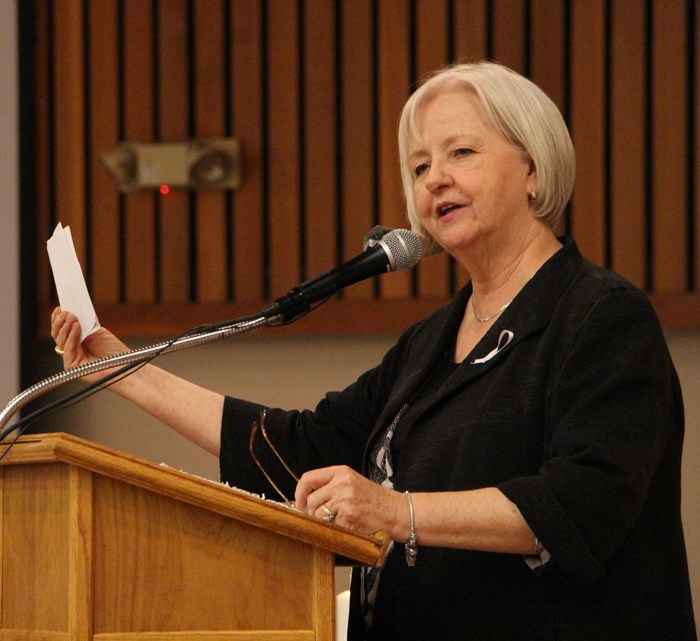Joy Smith wants to end human trafficking. That was her goal before she entered politics, her mission through her political career and her focus after her retirement from parliament. To her, the most effective way to do this is through education.
“People don’t realize what they’re looking at. They will say, oh that girl went into prostitution, or oh that’s a bad girl, or he’s a bad boy, ran in with the wrong crowd. In actual fact there are predators out there who will target young kids.”
Smith is tackling the problem in several ways. She’s doing a school program in order to help kids recognize predators and the signs that they are being ‘groomed’ to enter the sex trade. She notes that the average age of kids entering the sex trade is 12-14 years old, well before they are able to consent, so it’s important to get into the schools to talk to young people about what can happen.
“They’re groomed, and the predators get their trust... Kids are trusting and kids are easy to manipulate, and that’s how the predators do it.”
The school program is going to teach the history of slavery and human trafficking, before going into what it means in a modern context. Smith wants to instill a sense of national pride in students, as she explains how Canada has been a leader in laws and regulations.
“A lot of people don’t know that Lord Simcoe passed the first anti-slavery law in our country. People don’t know that Martin Luther King Jr. called Canada the North Star because of that ability to say that we won’t buy and sell people in Canada. The underground railway was developed out of Moose Jaw, so Saskatchewan has a wonderful history. Then we go into modern day slavery, what does that look like?”
Another way is to do presentations to groups, including in Yorkton on December 6. While Smith barely made it to the city, thanks to a winter storm that blanketed most of southern Saskatchewan. Smith was determined to get to the city because she believed it was important to get her message out here.
“I really had to get here, because there were so many questions. I heard from so many people who wanted to get involved and had stories that they wanted to tell me.”
That’s all part of her main goal, which is to educate and get people to talk about human trafficking, as well as reduce the amount of shame associated with the victims.
“I think education is our greatest weapon. Bringing it out into the open, knowing parents shouldn’t blame themselves, grandparents shouldn’t blame themselves, the kids shouldn’t blame themselves. It’s the predators, the predators are the ones who should take the full blame for what is happening.”
Through her presentation, Smith used examples of people she knew who were trafficked, noting that they included children of police officers and politicians, to show that it can happen to anyone. She wants to get people to talk openly about human trafficking, and learn about what happens and how they can stop it from happening.
“Once they get into it, they’re ashamed, they don’t want to admit that it happens, it’s rather sad. We, as Canadians, have to talk about it, we have to educate our youth, we have to educate our public, so it never happens.”
She also hopes that people don’t think it’s merely a problem in large cities or major urban centres, but that people are at risk of being trafficked everywhere.
“They should know, a kilometer from where they’re sitting, someone is being trafficked, that’s how prevalent it is.”



